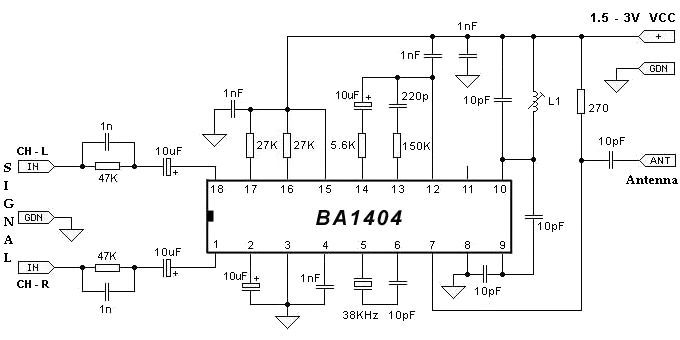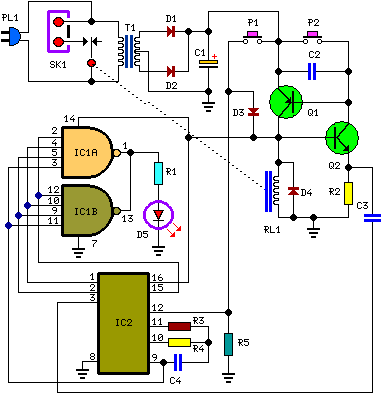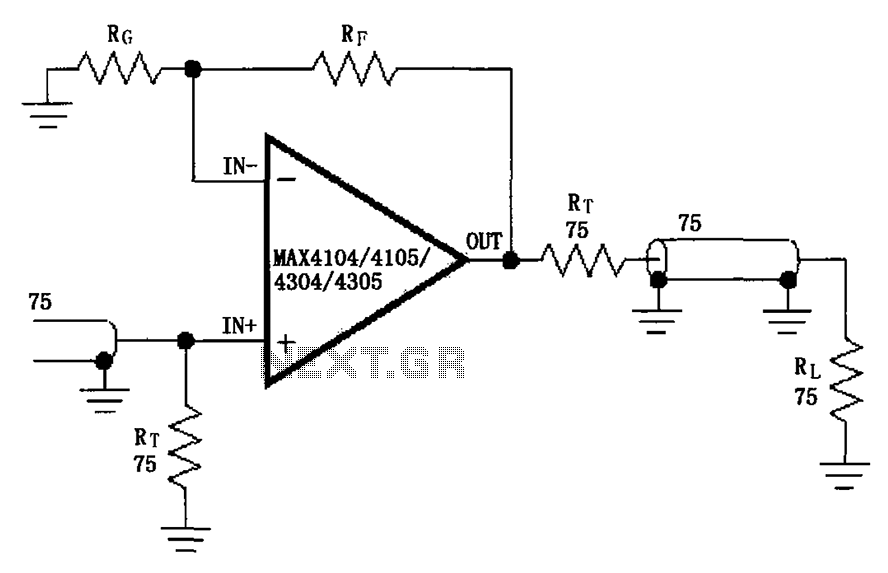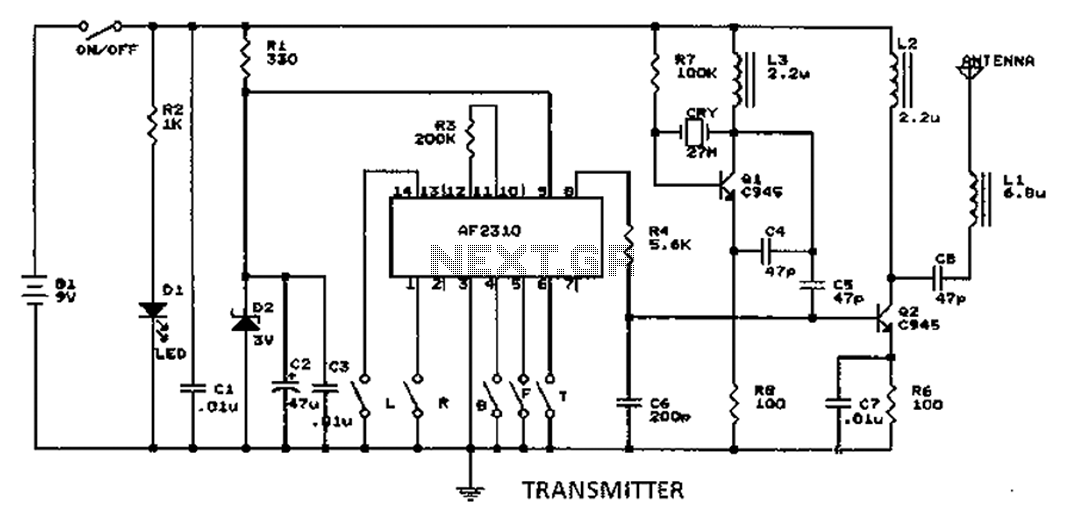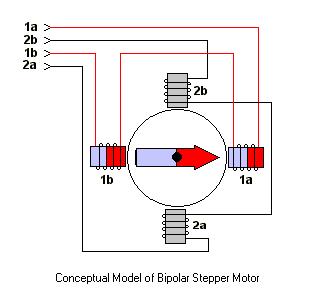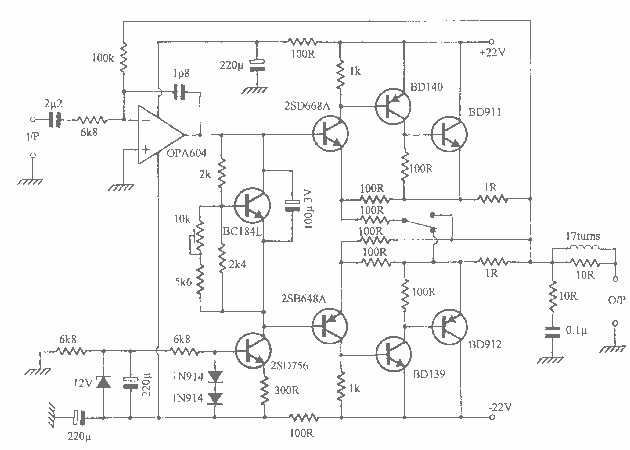
Receiver schematic design using MC3335PSSB
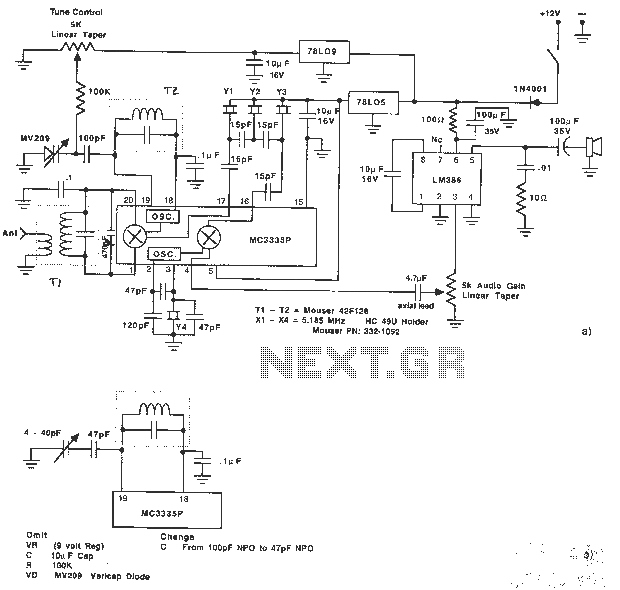
The MC3335P is a low-power narrowband FM receiver that can be used to design a very simple 80 m SSB receiver. The MC3335 also features a comparator circuit for FSK detection. The circuit is straightforward and requires few external components, including a basic audio IC based on an LM386 audio power amplifier. The MC3335P IC requires an input voltage between 2 and 6 volts, while the LM386 requires a 9-volt DC power supply. Therefore, this circuit utilizes two fixed three-terminal regulators. Additionally, this receiving circuit incorporates a variable capacitance diode or a variable capacitor circuit.
The MC3335P serves as an effective low-power narrowband FM receiver suitable for applications such as an 80 m SSB (Single Sideband) receiver. The integration of a comparator circuit within the MC3335 allows for efficient frequency shift keying (FSK) detection, enhancing the versatility of the design. The simplicity of the circuit design minimizes the need for numerous external components, making it ideal for hobbyists and engineers seeking to build compact and efficient radio receivers.
In this configuration, the audio output is facilitated by an LM386 audio power amplifier, which is known for its low power consumption and high efficiency. The LM386 operates on a 9-volt DC power supply, while the MC3335P requires a voltage supply in the range of 2 to 6 volts. To accommodate these differing voltage requirements, the circuit employs two fixed three-terminal voltage regulators. These regulators ensure stable and appropriate voltage levels for each integrated circuit, thereby enhancing the reliability of the overall receiver circuit.
Furthermore, the inclusion of a variable capacitance diode or a variable capacitor circuit allows for fine-tuning of the receiver's frequency response. This feature is particularly advantageous in applications requiring precise frequency adjustments, such as in amateur radio operations. Overall, the design of the MC3335P-based receiver circuit exemplifies a balance of simplicity, efficiency, and functionality, making it a commendable choice for low-power FM reception and SSB applications.MC3335P use low-power narrowband FM receiver, you can design a very simple 80 m SSB receiver. MC3335 also has a comparator circuit for FSK detection. The circuit is very simple and requires few external components, it includes a simple audio IC is based on an LM386 audio power amplifier. Since MC335P IC input voltage required 2 and 6 volts and LM386 requires a 9-volt DC power supply, this circuit is used in the two fixed three-terminal regulator between.
This receiving circuit is a variable capacitance diode or a variable capacitor circuit.
The MC3335P serves as an effective low-power narrowband FM receiver suitable for applications such as an 80 m SSB (Single Sideband) receiver. The integration of a comparator circuit within the MC3335 allows for efficient frequency shift keying (FSK) detection, enhancing the versatility of the design. The simplicity of the circuit design minimizes the need for numerous external components, making it ideal for hobbyists and engineers seeking to build compact and efficient radio receivers.
In this configuration, the audio output is facilitated by an LM386 audio power amplifier, which is known for its low power consumption and high efficiency. The LM386 operates on a 9-volt DC power supply, while the MC3335P requires a voltage supply in the range of 2 to 6 volts. To accommodate these differing voltage requirements, the circuit employs two fixed three-terminal voltage regulators. These regulators ensure stable and appropriate voltage levels for each integrated circuit, thereby enhancing the reliability of the overall receiver circuit.
Furthermore, the inclusion of a variable capacitance diode or a variable capacitor circuit allows for fine-tuning of the receiver's frequency response. This feature is particularly advantageous in applications requiring precise frequency adjustments, such as in amateur radio operations. Overall, the design of the MC3335P-based receiver circuit exemplifies a balance of simplicity, efficiency, and functionality, making it a commendable choice for low-power FM reception and SSB applications.MC3335P use low-power narrowband FM receiver, you can design a very simple 80 m SSB receiver. MC3335 also has a comparator circuit for FSK detection. The circuit is very simple and requires few external components, it includes a simple audio IC is based on an LM386 audio power amplifier. Since MC335P IC input voltage required 2 and 6 volts and LM386 requires a 9-volt DC power supply, this circuit is used in the two fixed three-terminal regulator between.
This receiving circuit is a variable capacitance diode or a variable capacitor circuit.
